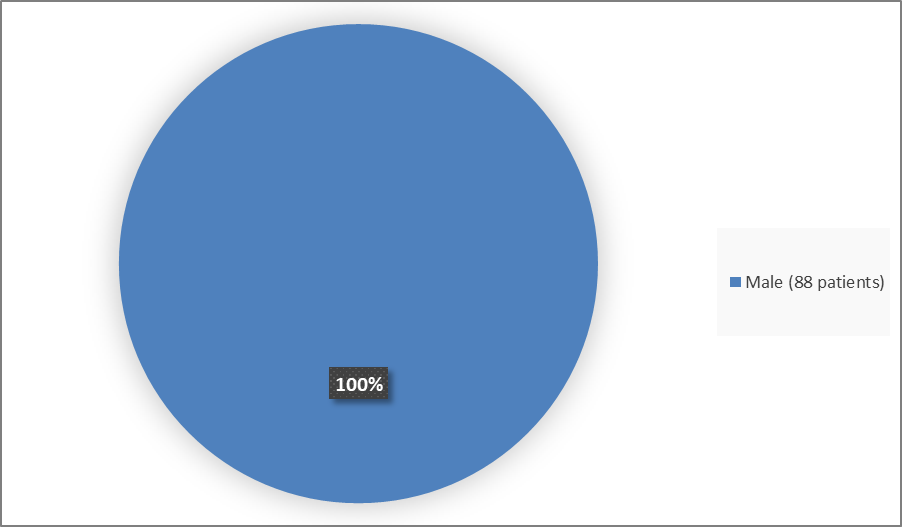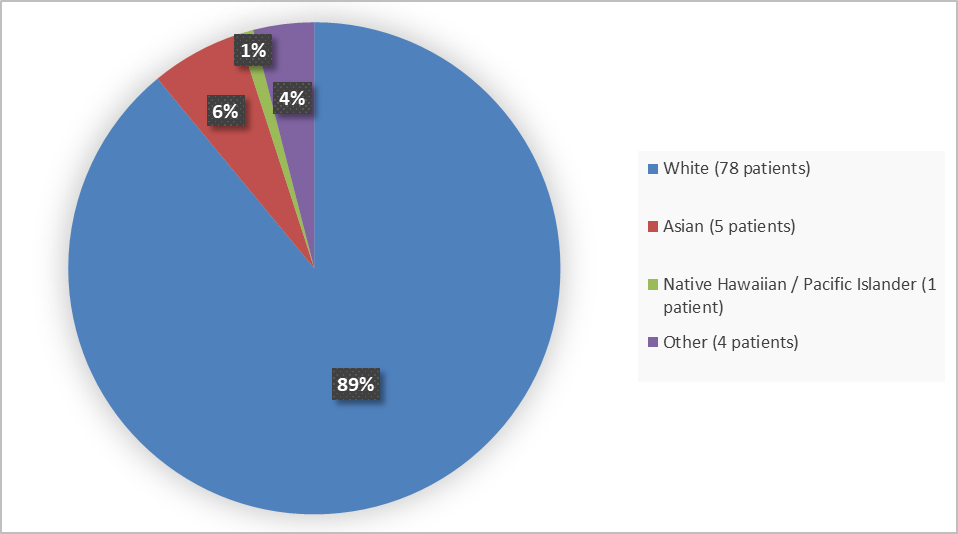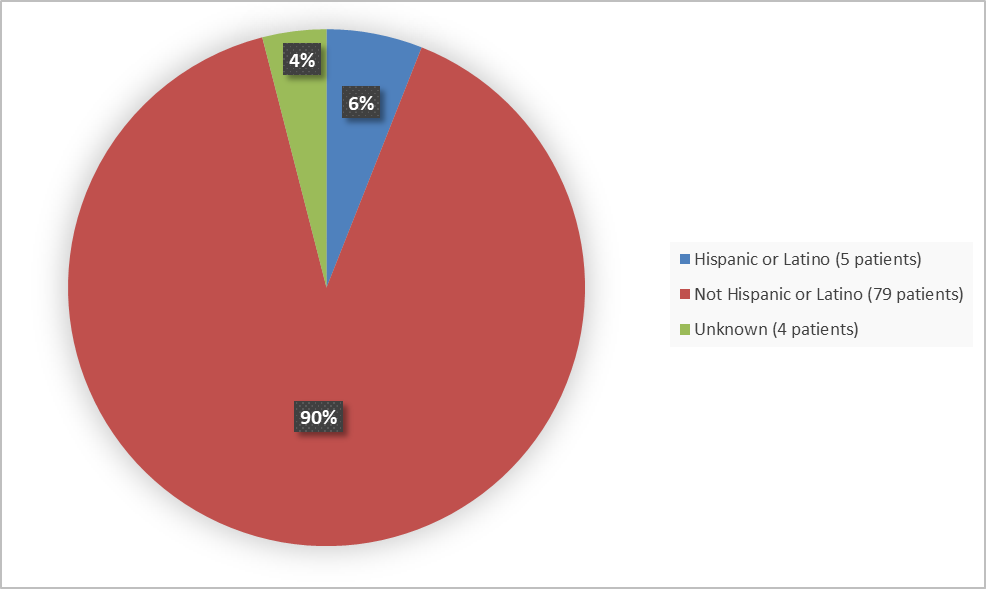Drug Trial Snapshot: AMONDYS 45
HOW TO USE THIS SNAPSHOT
The information provided in Snapshots highlights who participated in the key clinical trials that supported the original FDA approval of this drug, and whether there were differences among sex, race, age, and ethnic groups. The “MORE INFO” bar shows more detailed, technical content for each section. The Snapshot is intended as one tool for consumers to use when discussing the risks and benefits of the drugs.
LIMITATIONS OF THIS SNAPSHOT:
Do not rely on Snapshots to make decisions regarding medical care. Always speak to your healthcare provider about the benefits and risks of a drug.
Some of the information in this Snapshot is for presentation purposes and does not represent the approved conditions of use of this drug. Refer to the AMONDYS 45 Prescribing Information for all of the approved conditions of use of this drug (e.g., indication(s), population(s), dosing regimen(s), safety information).
Snapshots are limited to the information available at the time of the original approval of the drug and do not provide information on who participated in clinical trials that supported later approvals for additional uses of the drug (if applicable).
AMONDYS 45 (casimersen)
(ah-MAHN-dis)
Sarepta therapeutics, Inc.
Approval date: February 25, 2021
DRUG TRIALS SNAPSHOT SUMMARY:
What is the drug for?
AMONDYS 45 is a drug for the treatment of a particular type of Duchenne muscular dystrophy (DMD). It is to be used only in patients who have a specific mutation of the dystrophin gene.
DMD is a rare disease that primarily affects boys. It is caused by low levels of a muscle protein called dystrophin. The lack of dystrophin causes progressive muscle weakness and premature death.
How is this drug used?
AMONDYS 45 is given by a health care professional once every week directly into the bloodstream through a needle in the vein. This is known as an intravenous, or IV infusion. It takes about 35-60 minutes to receive AMONDYS 45 infusion.
What are the benefits of this drug?
AMONDYS 45 increased levels of dystrophin in the muscles of treated patients. It is believed that this increase may predict clinical benefit in patients.
AMONDYS 45 was approved under FDA’s accelerated approval program, which provides earlier patient access to a promising new drug while the company continues to conduct clinical trials to confirm that the drug works well.
A trial is ongoing to assess whether there is a clinical benefit of AMONDYS 45.
What are the benefits of this drug?
Table 1 presents dystrophin levels at baseline and at Week 48 from patients in Trial 1.
Table 1: Dystrophin Levels (% of Normal) at Baseline and at Week 48 from Muscle Biopsy Interim Results in Trial 1
|
|
Placebo |
AMONDYS 45 |
|---|---|---|
|
Dystrophin by Sarepta Western blot |
n=16 |
n=27 |
|
Baseline Mean (SD) |
0.54 (0.79) |
0.93 (1.67) |
|
Week 48 Mean (SD) |
0.76 (1.15) |
1.74 (1.97) |
|
Change from Baseline Mean (SD) |
0.22 (0.49) |
0.81 (0.70) |
|
p-value Change from Baseline to Week 48 |
0.09 |
<0.001 |
|
Between group mean difference |
0.59 |
|
|
p-value between groups |
p=0.004 |
|
Source: Adapted from Prescribing Information
Were there any differences in how well the drug worked in clinical trials among sex, race and age?
The trial that looked at the benefit of AMONDYS 45 consisted of boys only who were of similar age and predominantly White. It was not possible to determine if there were any differences in how well the drug worked in sex, race, and age subgroups.
Were there any differences in how well the drug worked in clinical trials among sex, race, and age groups?
The population for this trial was both small and relatively homogeneous; therefore, no subpopulation efficacy analyses were conducted.
What are the possible side effects?
Kidney damage was observed in animal studies with AMONDYS 45. The most common side effects of AMONDYS 45 are upper respiratory infections, cough, fever, headache, joint pain, and throat pain.
What are the possible side effects?
Adverse reactions observed in ≥20% of patients treated with AMONDYS 45 and 5% more frequently than in the placebo group in Trial 1 are shown in Table 2.
Table 2: Adverse Reactions Occurring in at Least 20% of Patients Treated with AMONDYS 45 and at a Rate at Least 5% More Frequently than in the Placebo Group in Study 1
|
Adverse Reaction |
AMONDYS 45 |
Placebo |
|---|---|---|
|
Upper Respiratory Tract Infections* |
65 |
55 |
|
Cough |
33 |
26 |
|
Pyrexia |
33 |
23 |
|
Headache |
32 |
19 |
|
Arthralgia |
21 |
10 |
|
Oropharyngeal Pain |
21 |
7 |
*Includes upper respiratory infection, pharyngitis, nasopharyngitis, and rhinitis.
Source: Adapted from Prescribing Information
Were there any differences in side effects of the clinical trials among sex, race, and age?
The trials that looked at the side effects of AMONDYS 45 consisted of boys only, who were of similar age and predominantly White. It was not possible to determine if there were any differences in side effects in sex, race, and age subgroups.
Were there any differences in side effects of the clinical trials among sex, race, and age groups?
Because of the small and relatively homogeneous population, no subgroup safety analyses were conducted.
WHO WAS IN THE CLINICAL TRIALS?
Who participated in the clinical trials?
The data for approval of AMONDYS 45 came from 43 male patients with Duchenne muscular dystrophy (DMD) in an ongoing clinical trial (Trial 1). The trial was conducted at 7 sites in 5 countries (United States, Canada, Germany, Spain, Czech Republic). Demographics of the trial population (called efficacy population) are presented in Table 3 under MORE INFO.
The ongoing clinical trial also provided data for the evaluation of safety in 57 male subjects receiving AMONDYS 45 and 31 receiving placebo for 96 weeks (called the safety population). Demographics from the safety population are presented below and in Table 3 under MORE INFO.
Figure 1 summarizes the percentage of patients by sex.
Figure 1. Baseline Demographics by Sex (Safety Population)
Baseline Demographics by Sex (Safety Population)
Source: Adapted from FDA Review
Figure 2 summarizes the percentage of patients by race.
Figure 2. Baseline Demographics by Race (Safety Population)
Source: Adapted from FDA Review
Figure 3 summarizes the percentage of patients by age.
Figure 3. Baseline Demographics by Age (Safety Population)
Source: Adapted from FDA Review
Figure 4 summarizes the percentage of patients by ethnicity.
Figure 4. Baseline Demographics by Ethnicity (Safety Population)
Source: Adapted from FDA Review
Who participated in the trials?
The Table 3 summarizes demographics of patients who were dosed at recommended 30mg/kg/week in Trial 1.
Table 3: Baseline Demographics of Patients in the Trial 1
|
|
AMONDYS 45 |
AMONDYS 45 |
|---|---|---|
|
Sex, n (%) |
||
|
Male |
88 (100) |
43(100) |
|
Race, n (%) |
||
|
White |
78 (89) |
37 (86) |
|
Asian |
5 (6) |
- |
|
Native Hawaiian / Pacific |
1 (1) |
- |
|
Other / Missing |
4(4) |
6 (14) |
|
Age group, n (%) |
||
|
6-9 years |
4 (50) |
|
|
6 to <12 years |
11 (35) |
|
|
12 to 17 years |
1 (15) |
|
|
7-8.5 years |
|
12 (28) |
|
>8.5 -13 years |
|
31 (72) |
|
Ethnicity, n (%) |
||
|
Hispanic or Latino |
5 (6) |
2 (5) |
|
Not Hispanic or Latino |
79 (90) |
41 (95) |
|
Not reported |
4 (4) |
- |
Source: Adapted from FDA Review
How were the trials designed?
Trial 1 is an ongoing clinical trial which enrolled patients with a particular type of Duchenne muscular dystrophy, who were randomly assigned to receive either AMONDYS 45 or placebo once a week for 96 weeks. Neither the patients nor the healthcare providers knew which treatment was being given. The benefit was evaluated by measuring the level of dystrophin in muscle biopsies in 43 patients (Efficacy Population) before treatment and at week 48, in an interim analysis. In this ongoing trial, 88 patients (Safety Population) have received AMONDYS 45 or placebo for up to 96 weeks.
How were the trials designed?
Trial 1 is an ongoing, double-blind, placebo-controlled, multicenter study designed to evaluate the safety and efficacy of AMONDYS 45 in ambulatory patients with Duchenne muscular dystrophy. The study is planned to enroll a total of 111 patients, age 7 to 13 years, randomized to 30 mg/kg/week AMONDYS 45 or placebo in a 2 to 1 ratio. Patients were required to have been on a stable dose of oral corticosteroids for at least 24 weeks prior to dosing with AMONDYS 45 or placebo. Following the 96-week double-blind treatment period, all patients began or are to begin an additional 48 week open-label treatment period. Interim efficacy was assessed based on the change from baseline in the dystrophin protein level (measured as % of the dystrophin level in healthy subjects, i.e., % of normal) at Week 48 in 43 patients (n = 27, AMONDYS 45; n = 16, placebo).
GLOSSARY
CLINICAL TRIAL: Voluntary research studies conducted in people and designed to answer specific questions about the safety or effectiveness of drugs, vaccines, other therapies, or new ways of using existing treatments.
COMPARATOR: A previously available treatment or placebo that is compared to the actual drug being tested.
EFFICACY: How well the drug achieves the desired response when it is taken as described in a controlled clinical setting, such as during a clinical trial.
PLACEBO: An inactive substance or “sugar pill” that looks the same as, and is given the same way as, an active drug or treatment being tested. The effects of the active drug or treatment are compared to the effects of the placebo.
SUBGROUP: A subset of the population studied in a clinical trial. Demographic subsets include sex, race, and age groups.



![Amondys 45 Figure 3 Baseline Demographics by Age Figure 3 is a pie chart summarizing the percentage of participants by age in the population evaluated for safety in Trial 1. In total, efficacy was assessed for 44 (50%) participants between 6 – 9 years of age, 31 (35%) participants between 9 – 12 years of age, and in 13 (15%) participants > 12 years of age.]](/files/Amondys%2045%20Figure%203%20Baseline%20Demographics%20by%20Age.jpg)
